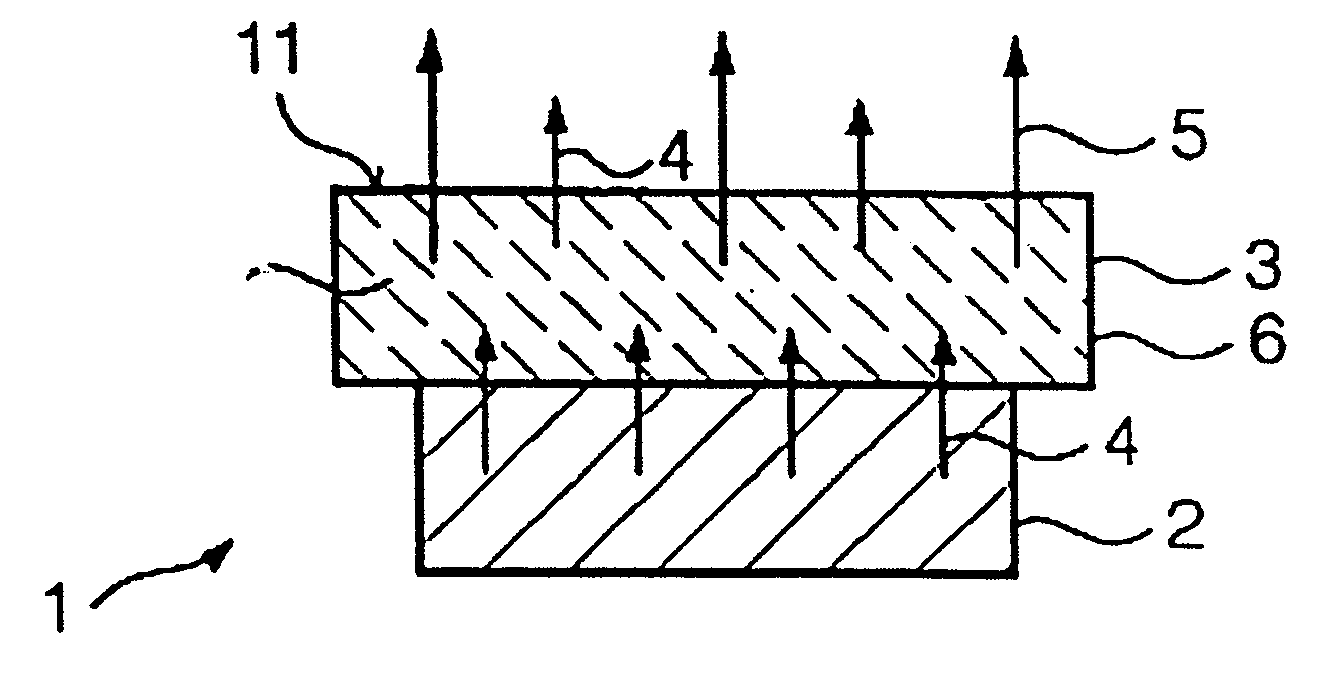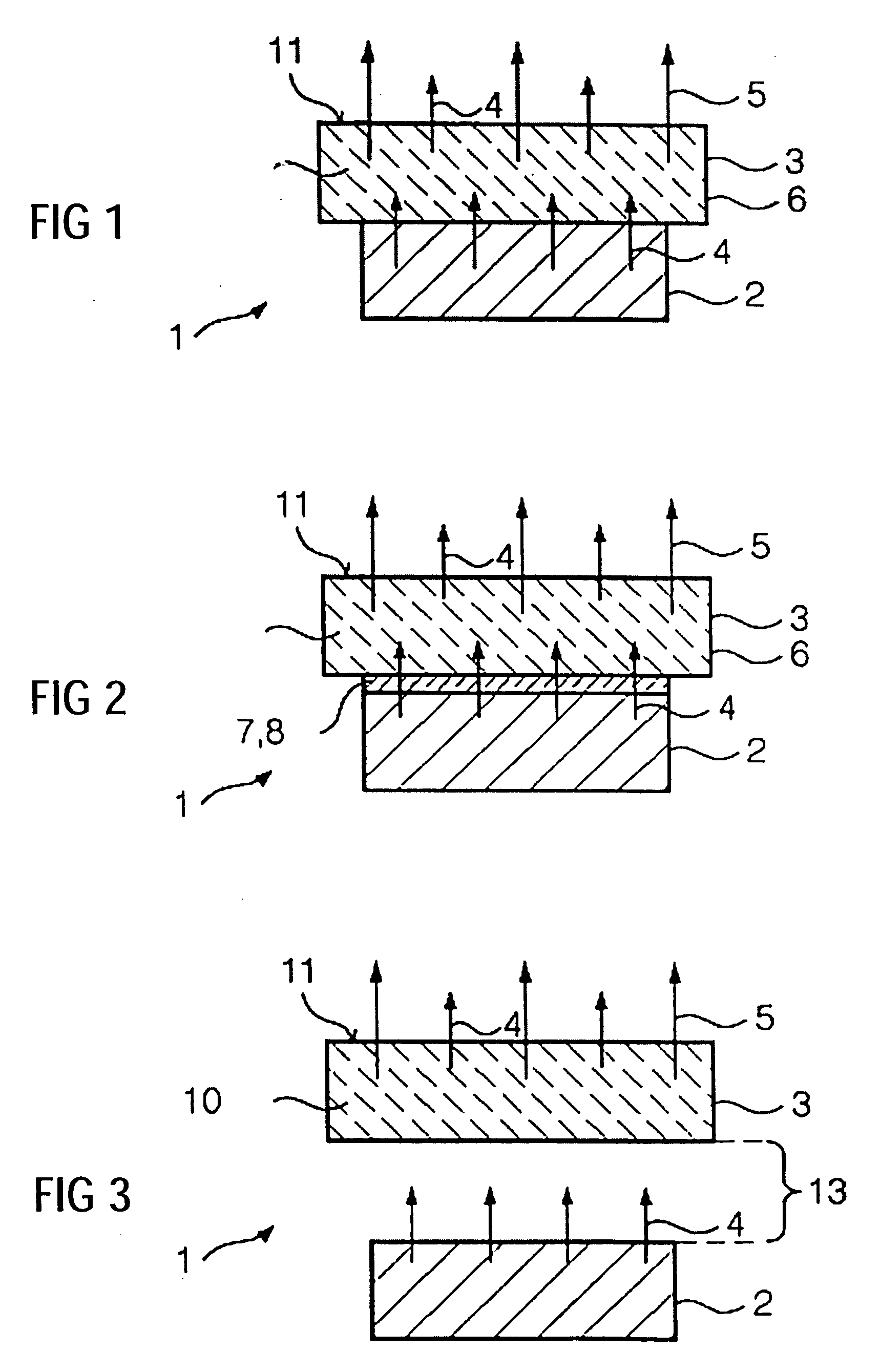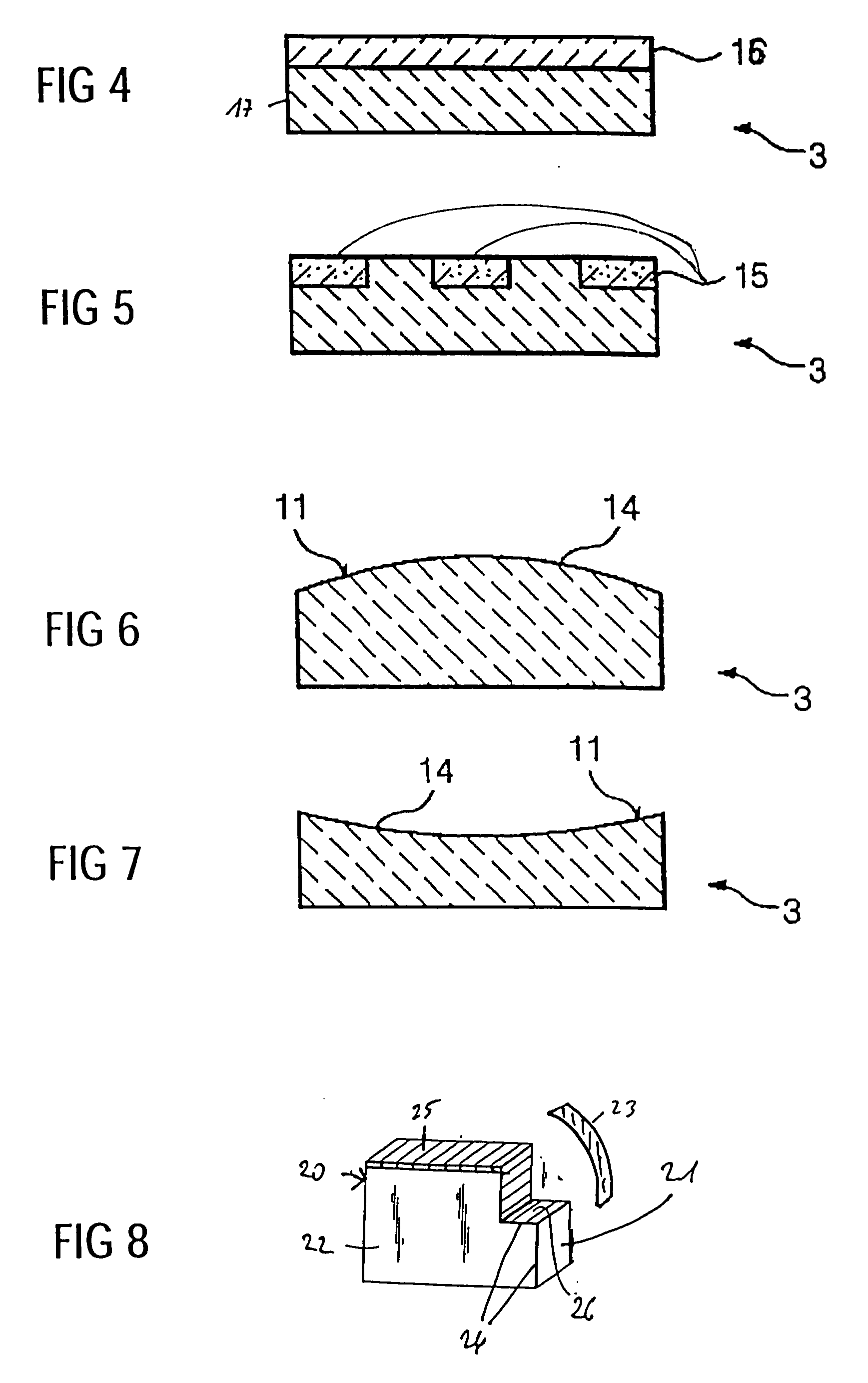Light source having an LED and a luminescence conversion body and method for producing the luminescence conversion body
a technology of luminescence conversion and luminescence, which is applied in the direction of discharge tube luminescnet screens, energy-saving lighting, sustainable buildings, etc., can solve the problems of photochemical instability of epoxy resin and impair the efficiency of the transfer of primary radiation to the luminescence conversion body
- Summary
- Abstract
- Description
- Claims
- Application Information
AI Technical Summary
Benefits of technology
Problems solved by technology
Method used
Image
Examples
Embodiment Construction
[0042] The light source 1 in FIG. 1 is a luminescence conversion LED that radiates white light. It comprises an LED 2 and a luminescence conversion body 3. The LED 2 has GaInN as semiconductor material. The LED 2 emits blue light with an intensity maximum at about 450 nm as primary radiation 4.
[0043] The luminescence conversion body 3 is a polycrystalline ceramic body having a ceramic density of about 95% of the theoretical density. The ceramic body 3 comprises ceramic particles, that is to say crystallites, having an average grain size of 10 .mu.m to 20 .mu.m (understood as equivalent diameter). The base material of the ceramic body 3 is an yttrium aluminum garnet. The base material is homogeneously doped with Ce for activation purposes. The Ce-doped, still ceramic base material functions as luminescent material which converts the primary radiation 4 of the LED 2 into the secondary radiation 5. The secondary radiation 5 emitted by the luminescent material has an intensity maximum -...
PUM
| Property | Measurement | Unit |
|---|---|---|
| Fraction | aaaaa | aaaaa |
| Fraction | aaaaa | aaaaa |
| Fraction | aaaaa | aaaaa |
Abstract
Description
Claims
Application Information
 Login to View More
Login to View More - R&D
- Intellectual Property
- Life Sciences
- Materials
- Tech Scout
- Unparalleled Data Quality
- Higher Quality Content
- 60% Fewer Hallucinations
Browse by: Latest US Patents, China's latest patents, Technical Efficacy Thesaurus, Application Domain, Technology Topic, Popular Technical Reports.
© 2025 PatSnap. All rights reserved.Legal|Privacy policy|Modern Slavery Act Transparency Statement|Sitemap|About US| Contact US: help@patsnap.com



